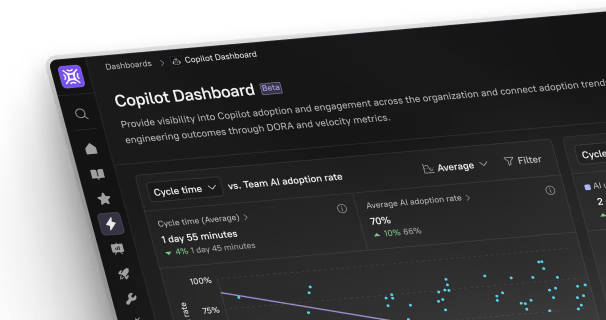Table of Contents:
- Introduction
- The Traditional Banking System
- The Introduction of AI in the Banking Sector
- The Benefits of AI in the Banking Sector
- Improving Customer Service
- Automation of Tedious Tasks
- Reduction of Costs
- Mobile Banking and the Advancements of AI
- The Risks of AI in the Banking Sector
- Conclusion
Introduction
 The banking sector has seen radical transformations due to technological innovations. Artificial Intelligence (AI) stands out as a pivotal force, reshaping everything from customer interactions to operational frameworks and risk management. Let’s dive into how AI is rewriting the rules in banking and what this means for financial institutions.
The banking sector has seen radical transformations due to technological innovations. Artificial Intelligence (AI) stands out as a pivotal force, reshaping everything from customer interactions to operational frameworks and risk management. Let’s dive into how AI is rewriting the rules in banking and what this means for financial institutions.
Legacy Banking Systems
The Good Ol’ Days
Traditionally, banking was a world of paper trails and slow, manual processes prone to human error, where analytics moved at the pace of a snail. This often led to customer frustrations and inflated operational costs—nobody misses those endless lines at the bank, right?
The AI Revolution in the Banking Sector
A New Era Begins
With AI’s grand entrance, banks have kicked many outdated practices to the curb. Now, they wield sophisticated algorithms and data-driven insights like a financial wizard, enhancing customer services, and slashing unnecessary costs. But as we cheer for these advancements, let’s not forget, AI is still a set of complex algorithms that won’t fetch you coffee.
Benefits of Integrating AI
Transforming Customer Service
- Chatbots and Personalization: AI-driven chatbots are on the front lines, handling inquiries and even dishing out personalized banking advice, though they’re not quite ready for heart-to-heart conversations.
- Automation Galore: From processing applications to managing data, AI takes the drudgery out of paperwork. However, don’t let it make you too lazy!
- Fraud Detection: AI is a sharp-eyed guardian, spotting frauds faster than a hawk. But remember, it’s not infallible—sometimes, it still needs a human’s touch.
Cost Cutting Through Automation
- Identifying Savings: AI is like a treasure hunter, uncovering savings by optimizing operations, though sometimes it might dig up more than you bargained for.
- Data Analytics: With AI, data analysis goes from marathon sessions to a sprint, offering insights at breakneck speeds—just make sure you can keep up!
Mobile Banking: AI’s Playground
Banking Unleashed
The evolution towards mobile banking has been a game-changer, allowing transactions from anywhere, anytime. It’s a win-win, offering convenience while saving costs, though sometimes at the expense of a good old chat with your bank teller.
Risks and Challenges of AI in Banking
Navigating the Pitfalls
- Data Security: With great data comes great responsibility. AI systems must be fortresses, safeguarding sensitive information against cyber threats—a breach could be more than just an oops moment.
- Job Impacts: AI’s efficiency comes at the cost of traditional banking jobs, sparking debates about the future of work. It’s not just about automation but evolving roles.
- Algorithmic Bias: AI is only as unbiased as its programming. Without careful design, it might perpetuate existing biases, making fairness in financial decisions a tricky balance.
- Regulatory Compliance: Staying within legal boundaries is crucial. AI must navigate a maze of regulations to avoid penalties and protect the bank’s reputation. It’s a compliance dance that requires some fancy footwork.
AI’s Broader Impact on Financial Services
Expanding Horizons
AI’s influence isn’t confined to the back office and customer service; it’s reshaping wealth management, loan underwriting, and risk assessment. Robo-advisors, for example, offer automated, algorithm-driven financial planning services with minimal human supervision. These advisors can analyze investment opportunities and manage portfolios 24/7, potentially outperforming human advisors in speed and efficiency.
Risk Assessment and Management
AI excels in identifying patterns and anomalies which makes it ideal for risk assessment. By analyzing vast datasets, AI can forecast potential defaulters more accurately and suggest mitigation strategies. However, let’s not throw caution to the wind; AI’s predictive prowess is only as good as the data it crunches.
Ethical AI: The Road Less Traveled
As AI becomes a staple in banking, the focus on ethical AI practices intensifies. Ensuring that AI systems make decisions that are fair and transparent has become as important as their technical capabilities. This includes tackling issues like “explainability” – making it easier to understand how AI makes decisions. It’s a bit like teaching it to show its math work.
Conclusion
As AI cements its role in banking, it brings a spectrum of opportunities and challenges. Banks need to weigh the benefits against potential risks thoughtfully. By embracing best practices and adapting to regulatory demands, they can leverage AI to not only enhance operational efficiency but also foster stronger customer relations. The journey with AI is complex but promising—full of potential for those ready to innovate responsibly.
To explore more about business automation, dive into this article: Comprehensive Guide to Business Automation.









